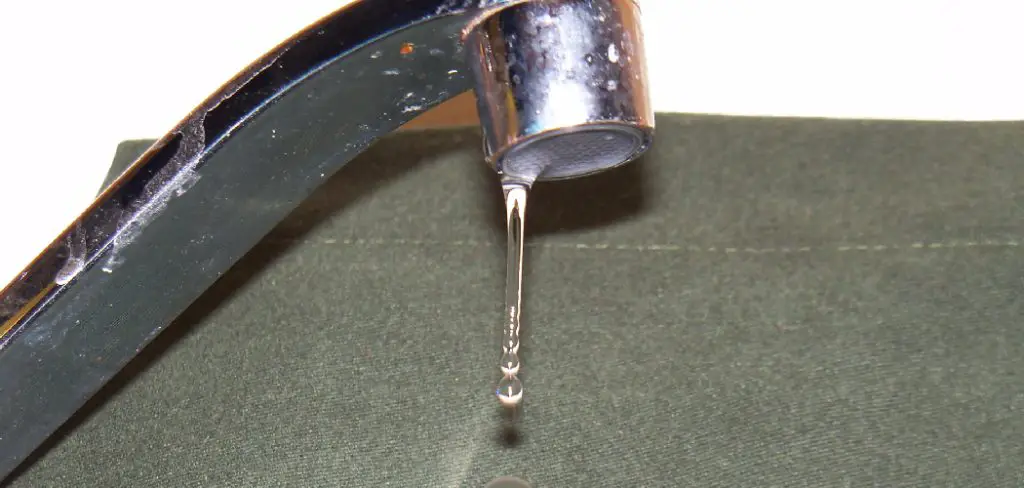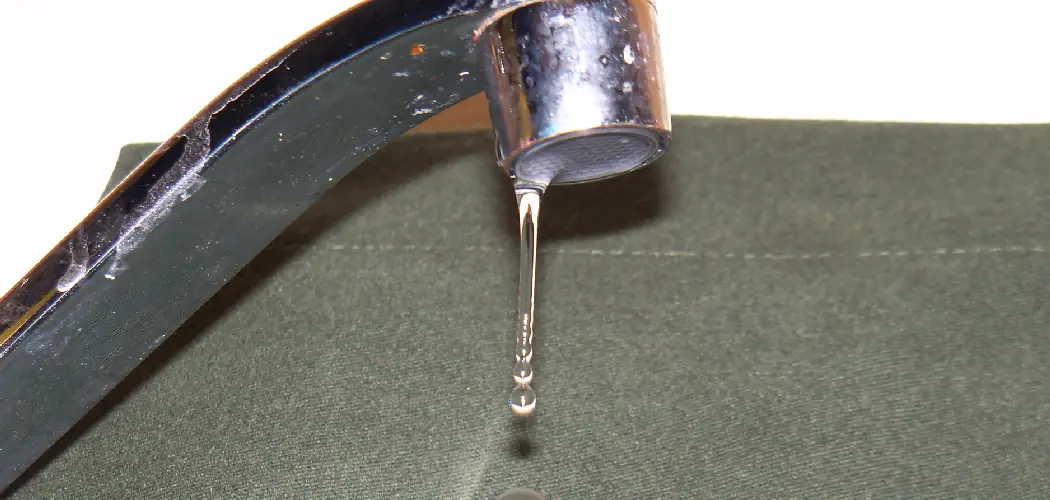Calcium buildup in faucets, also known as limescale, is a common household issue caused by minerals found in hard water. This accumulation can lead to clogged faucets, uneven water flow, and decreased appliance lifespan. However, the good news is that there are several effective methods, both natural and commercial, for tackling this issue. This guide will walk you through how to remove calcium buildup inside faucet and prevent it from occurring in the future.

Can You Remove Calcium Buildup Inside Faucet?
Yes, you can remove calcium buildup inside faucets using various methods. The most common and effective techniques involve using natural ingredients like vinegar, lemon juice, or commercial products specifically designed to remove limescale.
While it may seem daunting at first, with the right tools and materials, anyone can successfully clean and maintain their faucets to prevent calcium buildup. So, let’s dive into the step-by-step guide for removing calcium buildup inside faucets and explore prevention tips to keep your faucets clean and functioning properly.
Preparation
Gather Supplies:
Before starting the cleaning process, gather all the necessary tools and materials. For the natural cleaning method, you will need white vinegar, baking soda, lemon juice, rags, a toothbrush, and a plastic bag (optional). You will need a commercial limescale remover (such as CLR), gloves, eye protection, and a sponge for the commercial method.
Safety Precautions:
It is important to take safety precautions when using any cleaning product, especially if it contains strong chemicals. Wear gloves and eye protection while using commercial cleaners, and ensure that the room has good ventilation. Testing a small area before applying any cleaner to the entire faucet is always recommended.
Step-by-Step Guide on How to Remove Calcium Buildup Inside Faucet Using Natural Method
Step 1: Vinegar Soak
Start by shutting off the water supply to the faucet. Then, disassemble the faucet head and place it in a plastic bag filled with vinegar. Secure the bag around the head using rubber bands and submerge it completely for 1-2 hours. The acidity of vinegar helps loosen and dissolve calcium buildup.
Step 2: Vinegar Paste
For areas that are difficult to reach, such as the base of the faucet or around small crevices, a paste can be made using vinegar and baking soda. The abrasive texture of baking soda combined with the acidity of vinegar helps break down stubborn buildup.
Step 3: Lemon Juice
If you prefer a citrus scent, lemon juice can also be used in place of vinegar. Soak a rag in lemon juice and wrap it around the faucet head for 1-2 hours. Alternatively, you can scrub away at the buildup with a toothbrush dipped in lemon juice.
Step 4: Scrubbing
After soaking, take a toothbrush or sponge and scrub away at the calcium buildup. For stubborn areas, you may need to apply more vinegar or lemon juice and let it sit for longer before scrubbing again. Rinse well with water and dry.
Step 5: Rinse and Reassemble
Once all the buildup has been removed, rinse the faucet head with water and dry it thoroughly. Reassemble the faucet and turn on the water supply. You should notice a significant improvement in water flow and cleanliness.
Step-by-Step Guide on How to Remove Calcium Buildup Inside Faucet Using Commercial Method
Step 1: Read Instructions
Read the instructions provided by the manufacturer carefully before using any commercial cleaner. Each product may have a different application process, so it is important to follow the instructions for best results.

Step 2: Apply the Cleaner
Wear gloves and eye protection before applying the cleaner to the faucet. Spray or apply the cleaner directly onto the calcium buildup, covering all affected areas. Leave it on for the recommended time indicated in the instructions.
Step 3: Scrubbing
Using a sponge or toothbrush, scrub away at the calcium buildup. For stubborn areas, you may need to reapply the cleaner and let it sit for longer before scrubbing again.
Step 4: Rinse and Reassemble
Once all the buildup has been removed, rinse the faucet head with water and dry it thoroughly. Reassemble the faucet and turn on the water supply. You should notice a significant improvement in water flow and cleanliness.
Additional Tips
Preventing Calcium Buildup in Faucets
- Install a water softener to reduce the amount of minerals in your water.
- Regularly clean and maintain faucets by wiping them down with vinegar or lemon juice.
- To prevent buildup, wrap a cloth soaked in white vinegar or lemon juice around the faucet head overnight.
- When using commercial cleaners, opt for environmentally friendly ones that are safe for septic systems.
- Consider getting a water filter to remove minerals from your tap water before it reaches your faucets.
By following these tips, you can prevent calcium buildup in faucets and ensure they continue to function properly for years to come. Remember to clean and maintain your faucets regularly using the abovementioned methods to keep them free from buildup and maintain optimal water flow.
Common Mistakes to Avoid
- Not following safety precautions when using commercial cleaners.
- Using abrasive materials or tools that can damage the faucet surface.
- Applying too much force while scrubbing can cause scratches and further damage to the faucet.
- Neglecting regular cleaning and maintenance makes the buildup more difficult to remove over time.
Be sure to avoid these mistakes to effectively remove calcium buildup and maintain the longevity of your faucets. In addition, remember to always read instructions carefully and test a small area before applying any cleaning product to the entire faucet.
Benefits of Removing Calcium Buildup Inside Faucet
- Improved water flow and pressure.
- Elimination of unpleasant odors caused by mineral buildup.
- Prevention of future plumbing issues and costly repairs.
- Aesthetically pleasing faucets that look clean and well-maintained.
Overall, regularly removing calcium buildup inside your faucets not only improves their functionality but also contributes to a cleaner and healthier living environment. So next time you notice any buildup, be sure to follow these step-by-step guides for a natural or commercial method and keep your faucets clean and free from mineral buildup.
Conclusion
Both natural and commercial methods provide effective solutions for removing calcium buildup inside faucets. The natural method, using common household items like vinegar, baking soda, and lemon juice, proves to be a cost-effective, eco-friendly approach. The commercial method, on the other hand, offers a powerful, targeted solution for stubborn buildup. Regardless of the method chosen, the key to success lies in regular cleaning and maintenance.
Addressing the issue early and frequently can prevent mineral deposits from hardening and becoming more difficult to remove over time. We encourage you to try these methods and experience the difference they can make in your home. Your faucets will not only function better but will also look cleaner and more polished. As you transition these tips into habits, we’d love to hear about your experiences and any additional tips you might have. Cleaning and maintaining your faucets are small yet significant parts of maintaining a clean and healthy home. Thanks for reading our post about how to remove calcium buildup inside faucet.

